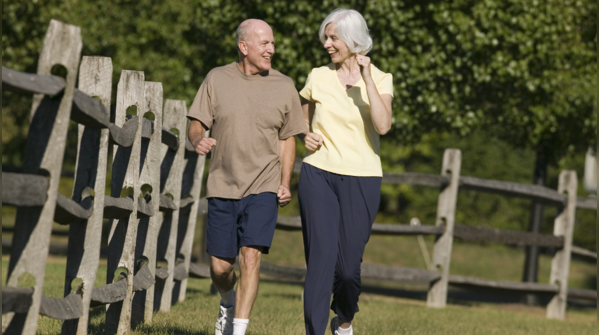- News
- lifestyle
- health-fitness
- fitness
- 10,000 steps a day: How walking right can help strengthen leg muscles
10,000 steps a day: How walking right can help strengthen leg muscles

How can walking 10,000 steps a day strengthen leg muscles
There’s a popular buzz around walking 10,000 steps a day. Many wear fitness bands, chase step goals, and feel accomplished when that magical number shows up. It's a satisfying metric, no doubt. But here's the real question: Is walking 10,000 steps alone enough to strengthen leg muscles?
The short answer: not always. It’s not just the number of steps, but how those steps are taken that makes the difference. Walking is a natural movement, yet it holds hidden power when done correctly. With a few tweaks and deeper understanding, those daily steps can become a low-impact, muscle-toning workout that truly strengthens the legs.

The truth behind the 10,000-step goal
The 10,000-step concept was born in Japan in the 1960s as part of a marketing campaign for a pedometer. It wasn’t based on scientific evidence but gained traction as a symbol of an active day.
That said, modern studies now back the idea that consistently walking can reduce the risk of chronic diseases. But when it comes to muscle strength, the way the muscles are challenged during those steps matters. Casual strolling won’t do much. But purposeful walking—at the right pace, posture, and terrain—can absolutely transform the legs.

Slow walking does not give us strong legs
Leg strength demands resistance and effort. Brisk walking, walking uphill, or consciously engaging the hamstrings and calves during the stride brings in resistance. Even a 10-minute uphill walk can activate more leg muscle fibers than 1000 steps on a flat surface. Think of it as choosing quality reps over quantity in a gym—same logic applies here.

Hidden muscle groups that regular walking misses
Walking tends to favour the quadriceps (front thigh muscles) and calves. But crucial stabilisers like the glutes, hamstrings, and even ankle muscles often stay underworked in a straight, predictable walk.
To involve these muscles:
Add inclines or stairs into the walking route.
Practice walking backward briefly on a flat surface (activates hamstrings and balance).
Squeeze the glutes gently with every step to activate those large but often lazy muscles.
Activating these hidden muscles can protect the knees, improve posture, and create stronger, more balanced legs.

Correct walking posture
Many people unknowingly walk with hunched shoulders, stiff hips, and flat feet.
To truly benefit leg strength:
Keep the spine tall and relaxed.
Swing the arms freely to support momentum.
Roll from heel to toe with every step.
Proper posture distributes weight evenly, engages the core, and allows the leg muscles to work in harmony. It’s a natural form of alignment therapy that subtly builds strength and reduces fatigue or injuries.

Why walking barefoot (sometimes) can be a game-changer
Occasional barefoot walking—on safe, natural surfaces like grass or sand—activates smaller foot muscles and stabilisers that shoes often suppress.
These tiny muscles play a big role in balance and strength. When they’re awake and active, the entire leg chain—from ankles to hips—functions better. It’s like reintroducing the legs to their original strength training method from childhood days of running barefoot.

How consistency and terrain variety build functional strength over time
Muscles adapt fast. Walking the same route, at the same pace, every day can soon feel like autopilot to the body. But when the route includes grass, sand, pebbled paths, slopes, and stairs, every step becomes a mini challenge. The body is forced to stabilise, adjust, and respond—leading to functional strength, not just endurance.
Even alternating walking surfaces twice a week can help develop coordination, strengthen joints, and challenge underused muscle groups.









